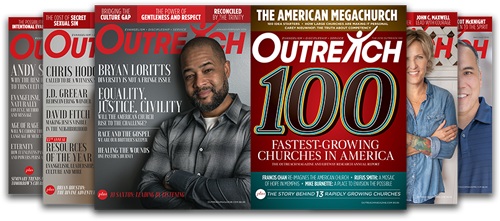The Power of Print
The average person is exposed to 10,000 ads and brand messages every day.1 With so many voices vying for the divided attention of your audience, how do you make a lasting impression?
Besides being in front of them often in memorable ways on the sites they visit, there is another powerful way to connect with your niche audience that people trust even more than digital ads: Print Advertising.
Trust
People trust print ads more than digital ads. This may come as a shocker, but when MarketingSherpa surveyed 1,200 Americans in 2016, they found that consumers trust print ads more than any other type of advertisement.2
82% of the respondents chose print ads when asked which type of advertising channels they trust more when they want to make a purchase decision. Only 39% selected online banner ads.
Brand Recall
People recall print ads better than digital ads. Neuroscientists have found that people are 70 percent more likely to recall your brand after seeing it in a print ad than a digital ad.3
Studies involving brain scans have found that physical ads activate different parts of the brain than digital ads, and viewing them “involves more emotional processing, which is important for memory and brand associations.”4
Comprehension
Print leads to better comprehension. People understand the messages conveyed in printed content better because they read it slower and are less distracted.5
As technologies have gotten faster and faster, so have the speeds at which we consume and read content online. Research has shown that this new digital “skimming” version of how we read leads to less overall comprehension, less in-depth reading, and a dramatic increase in distraction. But when we hold a printed book or magazine in our hands, we read slower, engage more parts of the brain, and remember the material better.
For instance, one study showed that when reading a story in digital or print formats, the overall understanding was about the same for both mediums. But when asked to reconstruct the plot, those who read in print yielded better results.5
Comprehension
Print leads to better comprehension. People understand the messages conveyed in printed content better because they read it slower and are less distracted.5
As technologies have gotten faster and faster, so have the speeds at which we consume and read content online. Research has shown that this new digital “skimming” version of how we read leads to less overall comprehension, less in-depth reading, and a dramatic increase in distraction. But when we hold a printed book or magazine in our hands, we read slower, engage more parts of the brain, and remember the material better.
For instance, one study showed that when reading a story in digital or print formats, the overall understanding was about the same for both mediums. But when asked to reconstruct the plot, those who read in print yielded better results.5
Implicit Memory
To get an idea of how the mere exposure to an ad has an effect on implicit memory, researchers surveyed park visitors using photographs.6 Participants were shown pictures of places of interest in order to determine if they were suitable for tourism promotions. One group was shown a photo that also had a billboard ad for Pfeffi, a made-up brand of candy, but their attention was not drawn to it. The second group was shown pictures of places that did not feature the billboard.
At the end of the survey, people were then asked to choose between two candies offered at the same time, Pfeffi and Zitro (a made-up brand of lemon candy not shown to them before).
In the study, those from group one mostly chose Pfeffi candy, showing that repeated exposure to the ad led to a preference for what was advertised. Demonstrating how strong the exposure effect was, the control study revealed that when there had been no exposure to Pfeffi in the photographs, the clear preference was for the lemon Zitro candy.
These results show the impact of how even the mere exposure to an ad can influence preferences and choices.
The Right Audience
Outreach Magazine
Outreach Magazine has been a trusted resource for church leaders for 16 years. Pastors and church leaders look forward to the relevant and timely articles on the issues and trends facing the church today. The “Outreach 100” issue of the magazine highlights the country’s fastest-growing churches and is one of the biggest issues of the year. This is a magazine that church leaders leave on their desk throughout the year for ideas and inspiration.
With a readership of 75,000, advertising in this award-winning magazine gets you in front of engaged, ministry-focused church leaders.

6 power-packed issues a year!
87% of these subscribers have an annual church budget of $100,000+. 30% have a budget over 1 million.
Readers describe their church as…
Traditional
Contemporary
Blended
Postmodern
Multiple services and styles
90% of subscribers hold a Bachelor’s degree or higher.
Describe their church as…
81% of subscribers have visited an advertiser’s website after seeing an ad in Outreach magazine. 52% have actually purchased a product or service as a result of the ad.
Leverage the Power of Print
Outreach Magazine allows you to reach an active, niche audience of church leaders, who not only trust the Outreach brand, but who value the relevant resources advertised alongside the timely content.
Digital ads are great for delivering quick results with lots of data. But if you want to penetrate your market, print ads should be part of your strategy. By physically placing your brand in people’s hands, you create lasting impressions that engage your audience in meaningful ways.
